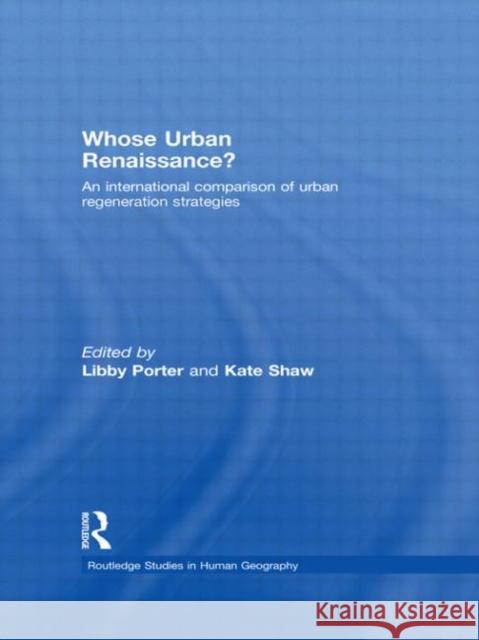Whose Urban Renaissance? : An international comparison of urban regeneration strategies » książka
Whose Urban Renaissance? : An international comparison of urban regeneration strategies
ISBN-13: 9780415456821 / Angielski / Twarda / 2008 / 320 str.
Whose Urban Renaissance? : An international comparison of urban regeneration strategies
ISBN-13: 9780415456821 / Angielski / Twarda / 2008 / 320 str.
(netto: 718,58 VAT: 5%)
Najniższa cena z 30 dni: 730,42
ok. 22 dni roboczych
Bez gwarancji dostawy przed świętami
Darmowa dostawa!
This title tells how researchers in 21 world cities examine specific cases of urban regeneration. They focus on the policies driving the process and the way these policies work as well as on instances of opposition and active struggle
The desire of city governments for a ‘renaissance’ of their inner-cities has become a defining feature of contemporary urban policy. From Berlin and Toronto to Johannesburg and Beijing, government policies are succeeding in attracting investment and middle-class populations (back) to their inner areas. Cities undergoing regeneration—or gentrification as this process can often become—produce winners and losers. There is now a substantial literature on the inequitable effects of rent increases and displacement, for example, and even more on the global and local contexts for urban regeneration and the reasons governments encourage it. But there is very little exploration of the policies used to drive regeneration. How do they work on the ground? Are certain patterns present in all regeneration strategies? To what extent are the varying levels of ‘success’ contingent on local conditions? What different kinds of policy can be used to achieve more socially equitable outcomes—harnessing the benefits of regeneration without excluding vulnerable residents? Are such policy responses politically viable?
Edited chapters from researchers and activists in 18 cities in Europe, North America, Asia, South Africa and Australia examine specific cases of urban regeneration. They focus on the policies driving the process and their effects, on local contingencies that influence the way these policies work, on instances of opposition and active struggle, and on the occasional policy interventions that are used to ameliorate the negative impacts of gentrification. The book not only expands understandings of who participates in and benefits from the ‘urban renaissance’, but takes the first really detailed look at the policies used to drive regeneration, and to respond to its more inequitable effects..
The editors develop a comparative analysis of these drivers, constraints and responses in the concluding chapters, providing a critical assessment of existing policy with the object of helping inform future practices. The book is targeted at scholars, activists and practitioners: its constructive policy emphasis is unique.











